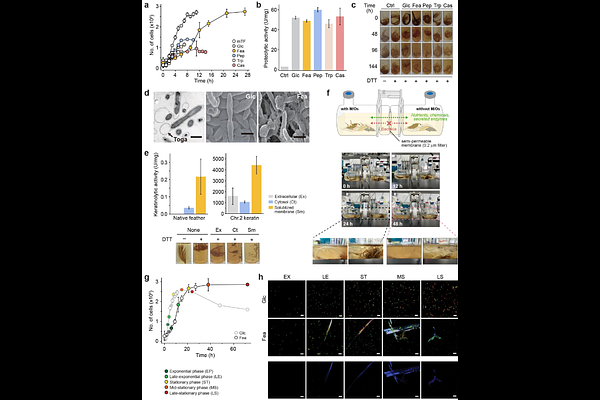Keratin degradation reflects a starvation survival strategy in Fervidobacterium islandicum AW-1

Keratin degradation reflects a starvation survival strategy in Fervidobacterium islandicum AW-1
Lee, D.-W.; Sung, J.-Y.; Kim, J.-Y.; Jin, H.-S.; Baek, J.-H.; Kim, N. E.; Song, H. H.; Bong, S.-H.; Lee, Y.-J.; Kim, B.-C.; Lee, D. Y.
AbstractKeratin is a highly cross-linked, disulfide-rich protein that resists proteolysis, which poses a major challenge for microbial degradation. Here, we show that Fervidobacterium islandicum AW-1 initiates a starvation-induced keratinolytic program involving membrane-associated proteases and redox-mediated sulfitolysis. Multi-omics integration reveals that nutrient limitation triggers global metabolic reprogramming, promoting sulfur assimilation, biofilm formation, and chemotaxis-linked persister-like adaptation. Substrate-specific transcriptomics identified a temporally regulated protease repertoire tightly coordinated with sulfitolytic activity, facilitating efficient feather decomposition under starvation. Protein-protein interaction networks uncovered stress-responsive transcriptional regulators that govern this process. Time-resolved gene expression analysis and metabolomic profiling further revealed that cyclic-di-GMP signaling, stringent response, and flagella assembly mediate transitions between motility and sessile growth, contributing to surface colonization and persistence. Together, our findings establish a starvation-responsive survival mechanism that couples keratin degradation to stress adaptation in extreme environments, offering insights into microbial persistence and potential strategies for keratin valorization.